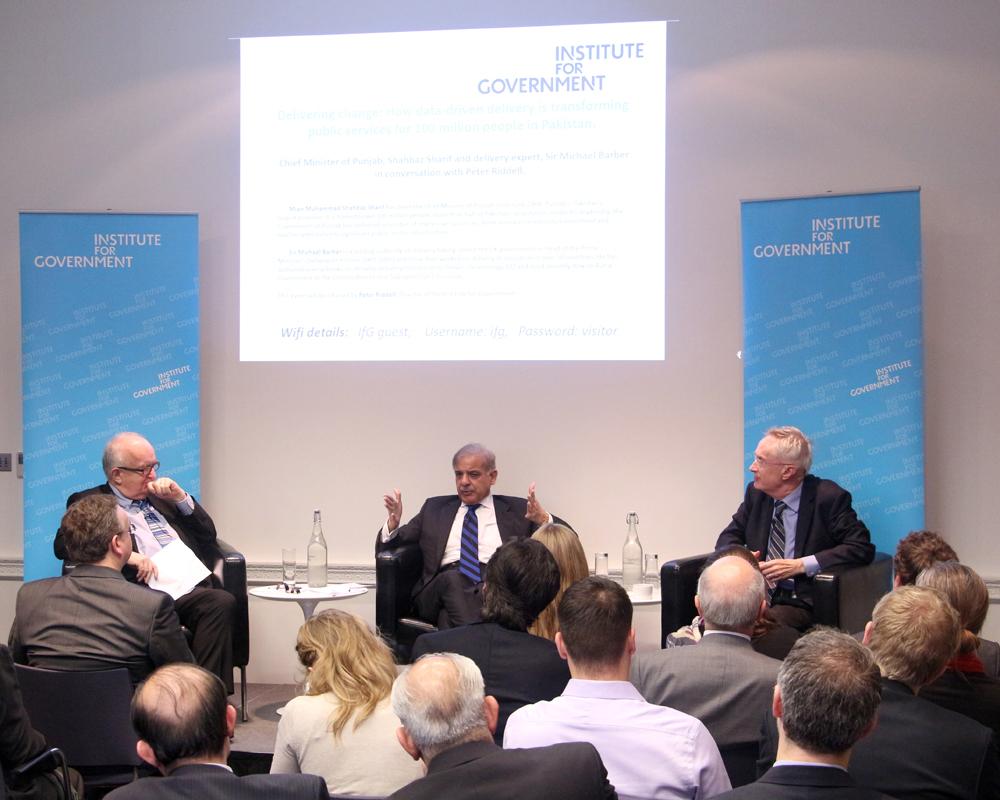At a time when departments across Whitehall are setting up implementation units to track the delivery of key policy priorities, the British Government is also sponsoring these units overseas. Jen Gold hears how the Department for International Development (DFID) is working with the Punjab Government in Pakistan to achieve dramatic results in education and health, and asks what lessons Whitehall might learn.
Delivery units have become a truly global phenomenon. They now operate in over 20 jurisdictions, spanning six continents. And this trend shows no sign of letting up. In September 2015, New South Wales, Australia became the latest member of the club, while Canada’s newly-elected federal government is now looking to import the model.
But, as we pointed out in our International Delivery report, much of the rapid take-up of these units, and the methodologies they use, is down to growing interest from the international development industry. More and more institutions – ranging from charitable foundations and national aid agencies to international organisations and consultancies – are offering technical support. Where, traditionally, efforts to strengthen governance have focused on transparency initiatives such as election monitoring, much more emphasis is now being placed on the need to reinforce delivery mechanisms in government. For DFID – who are currently sponsoring units in the Punjab (Pakistan), Tanzania, and Sierra Leone – there is undoubtedly the added incentive of being able to demonstrate value for money in aid spending.
At an event hosted by the Institute for Government in December 2015, the Chief Minister of the Punjab, Shahbaz Sharif, set out the striking results of reforms in education and health that have been guided by a series of delivery roadmaps and tracked by the province’s Special Monitoring Unit. Primary school enrolment, for instance, has increased from 84.8% to 90.4% since 2011 – equating to an additional one million children in the school system. In healthcare, meanwhile, vaccinator attendance has soared from 22% to over 90%.
Shahbaz Sharif was joined in conversation at the event by Sir Michael Barber, whose Prime Minister’s Delivery Unit (under Tony Blair) has served as a model that others, including the Punjab, continue to replicate. Barber now advises governments around the world and is a DFID special representative in the Punjab.
Of course, the delivery unit model has been modified wherever it’s been adopted. But the Punjab unit does share certain core characteristics with similar units elsewhere:
- Routine data collection: Schools receive monthly visits from a monitoring and evaluation team. They’re tasked with gathering statistics on enrolment, teacher attendance, facilities, and learner outcomes and then feeding this back to the Special Monitoring Unit. The same method has been applied in health, with the province’s 122 hospitals receiving regular inspections.
- Data interrogation: The Special Monitoring Unit analyses the data to identify trends, focusing on questions directly linked to the province’s reform agenda. The Chief Minister himself conducts regular 'stocktakes' with officials every two months and undertakes unannounced spot checks across the province to scrutinise the validity of the data being collected.
- Presenting data analysis in a compelling way: Delivery units rely on a political champion, who is prepared to set a clear direction and hold officials to account. But, as Michael Barber pointed out, “Chief Ministers or Prime Ministers are busy people. They don’t want to look at scatter graphs and distributions and lots of dots on a page.” Effective data visualisation is key to telling a compelling story. Both Barber and the Chief Minister recalled the power of a simple bar chart in a presentation on the province’s health roadmap. It compared infant mortality in the Punjab, Pakistan (88 per 1,000 live births) to that of the Punjab in India (37 per 1,000) and Sri Lanka (8 per 1,000). The Chief Minister turned to his health officials and said, “How do you sleep at night?”
What lessons are there for Whitehall?
1. How technology can enable real-time data collection: The widespread use of smart monitoring systems in the Punjab has enabled data to be collected and collated at a speed most Whitehall delivery units can’t match. Smartphones and tablets are being used in the field to collect and geo-tag data, which in turn is fed into a centralised dashboard. This reporting mechanism enables automatic SMS messages to be sent out to under-performing institutions and 'stocktake' meetings, to consider performance trends in real time.
2. The potential benefits of transparency: Whitehall’s five departmental units and the central Implementation Unit in the Cabinet Office are viewed as mechanisms for driving internal transparency – helping secretaries of state and the Prime Minister track the progress being made on the delivery of their policy priorities. But external transparency can be equally powerful. Following in the footsteps of jurisdictions such as Maryland and Chile, the Government of the Punjab is putting its performance data online. This enables citizens – especially parents and school councils – to point to inconsistencies in the data or identify misreporting by monitoring officers.
3. A wealth of expertise to be tapped into: DFID has built up a wealth of expertise in setting up and supporting delivery units abroad. But, as new units emerge across Whitehall, this in turn raises questions about whether enough learning is being shared between departments.
Watch the event video here:
- Topic
- Public services
